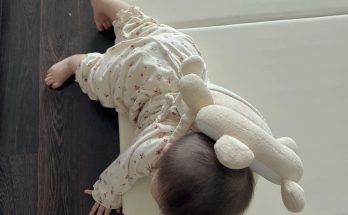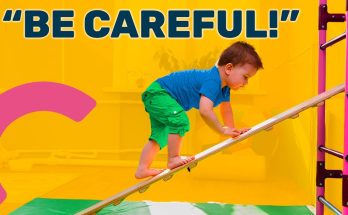Bathing a newborn is a delicate and essential task that requires patience, care, and the right technique. While newborns do not need daily baths, keeping them clean is important for their hygiene and comfort. New parents may feel nervous about handling a tiny, slippery baby, but with the proper steps, bath time can be a pleasant and bonding experience. This guide will provide step-by-step instructions on how to bathe a newborn safely, along with tips, precautions, and best practices.
How Often Should You Bathe a Newborn?
Newborns do not require frequent baths, as they do not sweat or get dirty in the same way that older children and adults do. The American Academy of Pediatrics (AAP) recommends bathing a newborn two to three times per week. Daily baths can dry out a baby’s sensitive skin. Instead, you can keep your baby clean by wiping their face, hands, and diaper area with a warm washcloth as needed.
Preparing for the Bath
Before you begin, make sure you have all necessary supplies within reach. Never leave your baby unattended during bath time.
Essential Bath Supplies:
- A baby bathtub or a sink lined with a soft towel
- Lukewarm water (about 100°F or 37.8°C)
- Mild, fragrance-free baby soap and shampoo
- Soft washcloths
- A cup for rinsing
- A clean, soft towel
- A fresh diaper
- Clean clothes
- Optional: Baby lotion and a soft baby brush
Step-by-Step Guide to Bathing a Newborn
Step 1: Choose the Right Bathing Method
There are two common ways to bathe a newborn:
- Sponge Bath: Recommended for newborns until the umbilical cord stump falls off (usually within the first two weeks).
- Tub Bath: Once the umbilical cord has healed, you can bathe your baby in a small infant tub or a clean sink.
Step 2: Fill the Tub with Lukewarm Water
If using a tub, fill it with two to three inches of lukewarm water. The water should be comfortably warm but not hot. Test the temperature using your wrist or elbow before placing the baby in the bath.
Step 3: Undress Your Baby and Support Them Properly
Undress your baby, leaving only the diaper on if you are giving a sponge bath. Lay them on a soft, flat surface covered with a towel. If using a tub, gently lower your baby into the water, keeping one hand under their head and neck for support.
Step 4: Start with the Face and Head
- Use a clean, damp washcloth to gently wipe your baby’s face, eyes, and ears. Use a different part of the cloth for each area to avoid spreading dirt.
- Clean behind the ears and under the chin where milk residue can collect.
- Wet your baby’s hair with a cup of water, apply a small amount of baby shampoo, and gently massage their scalp. Rinse thoroughly.
Step 5: Wash the Body
- Use a mild baby soap on a washcloth to clean your baby’s arms, chest, back, and legs.
- Pay special attention to skin folds, where sweat and milk can accumulate.
- If your baby still has the umbilical cord stump, avoid getting it too wet. Instead, clean around it gently with a damp cloth.
Step 6: Clean the Diaper Area
- For baby girls: Wipe front to back to prevent infection.
- For baby boys: If uncircumcised, clean the outside of the penis without retracting the foreskin. If circumcised, follow the doctor’s care instructions.
Step 7: Rinse and Dry
Use a cup to pour clean water over your baby’s body to rinse off any soap. Avoid getting water in their eyes or ears.
Gently lift your baby out of the bath, supporting their head and neck. Wrap them in a soft towel and pat dry. Be sure to dry in the folds of the skin to prevent irritation.
After the Bath: Keeping Your Baby Comfortable
Moisturize and Dress Your Baby
- If your baby has dry skin, you can apply a small amount of fragrance-free baby lotion.
- Dress your baby in a clean diaper and soft clothing.
Brush the Hair
If your baby has hair, use a soft baby brush to gently comb through it.
Important Bathing Safety Tips
- Never leave your baby unattended in water. Even an inch of water can be dangerous.
- Always support the baby’s head and neck. Newborns lack neck control, so they need continuous support.
- Check the water temperature. Too hot or too cold water can shock or burn a baby’s sensitive skin.
- Keep baths short. A newborn bath should last only 5–10 minutes to prevent chilling.
- Avoid using too much soap. Excess soap can dry out the baby’s delicate skin.
- Dry thoroughly. Make sure all folds and creases are completely dry to prevent irritation and rashes.
When to Seek Medical Advice
Call your pediatrician if you notice any of the following during or after bath time:
- Persistent rashes or dry patches that worsen
- Signs of infection around the umbilical stump (redness, swelling, or discharge)
- Fever or unusual fussiness after a bath
- Any other concerns about your baby’s skin or hygiene
Conclusion
Bathing a newborn can be an enjoyable and bonding experience when done correctly. Following the right steps ensures your baby stays clean, comfortable, and safe. Whether you’re giving a sponge bath in the early weeks or transitioning to a tub bath later on, practicing proper techniques will help you feel confident and at ease. With time, bath time will become a cherished routine for both you and your baby.



